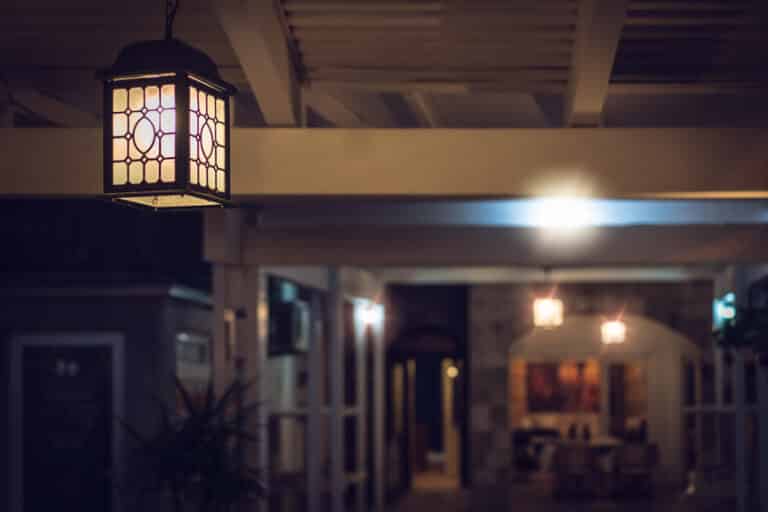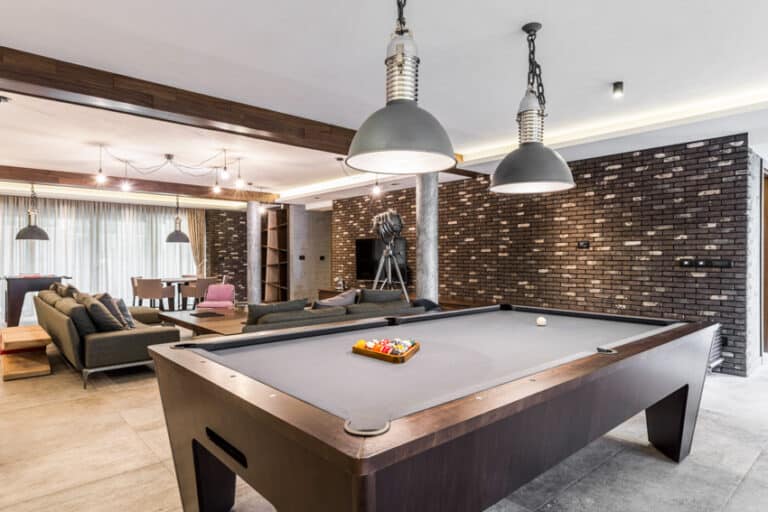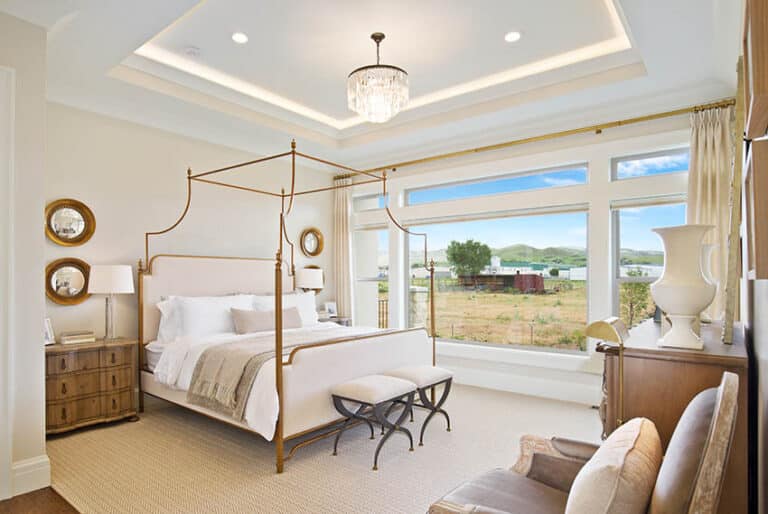28 Types Of Light Switches (Dimmers, Toggles & More)
The lighting switch is one of the most visible parts of a lighting system, even though great room illumination comes from multiple components working together. While most people know that there are several types of light switches, they are less acquainted with the meanings of these distinctions.
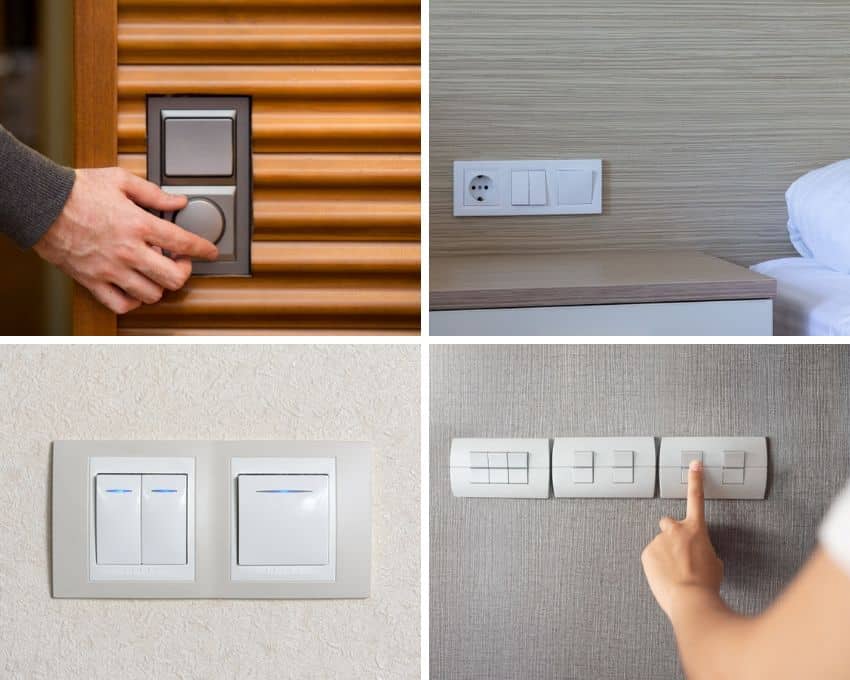
You don’t have to be an expert to install new light switches in your house. However, exploring the various options in the market is advisable to choose which best meets your needs.
Let’s look at the many types now available with this beginner’s introduction to light switches, including popular designs and their purposes.
Toggle Switch
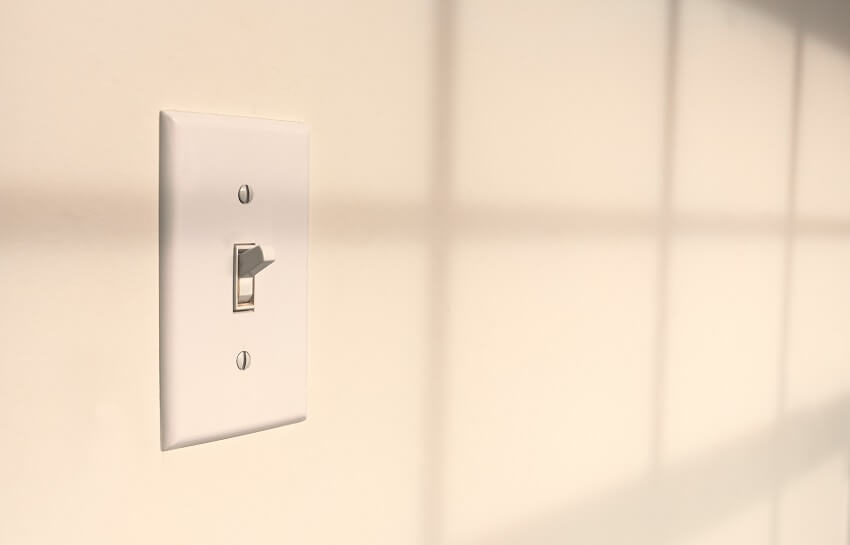
A toggle switch is probably the first thing that springs to mind when you think about light switches. Toggle light switches are the most popular kind of light switch found in most houses.
These light switches are simple to install, and you won’t have any trouble figuring out how to operate a primary toggle light switch.
You turn on your lights by flipping the toggle switch up, then turn them off by flipping it down. It is a straightforward answer to your lighting requirements, and it has been proven effective for many years.
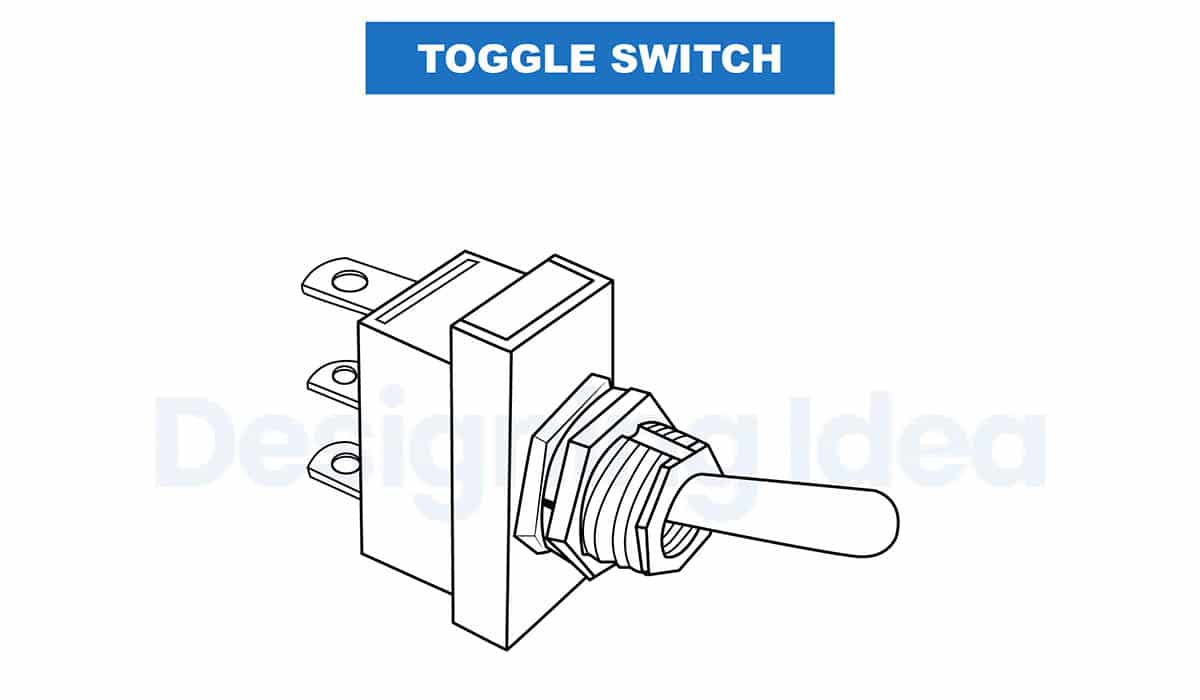
A toggle light switch is typically the best choice if installing new lights in a new space. Various switches have more functionality than a typical toggle switch, but this one will be enough for most lighting applications.
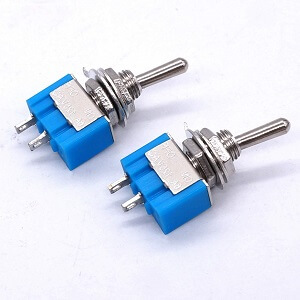
See this toggle at Amazon [sponsored link]
You may find the standard toggle light switches at just about any hardware shop. The installation should proceed without a hitch, and you will have dependable light control as needed.
Rocker Switch
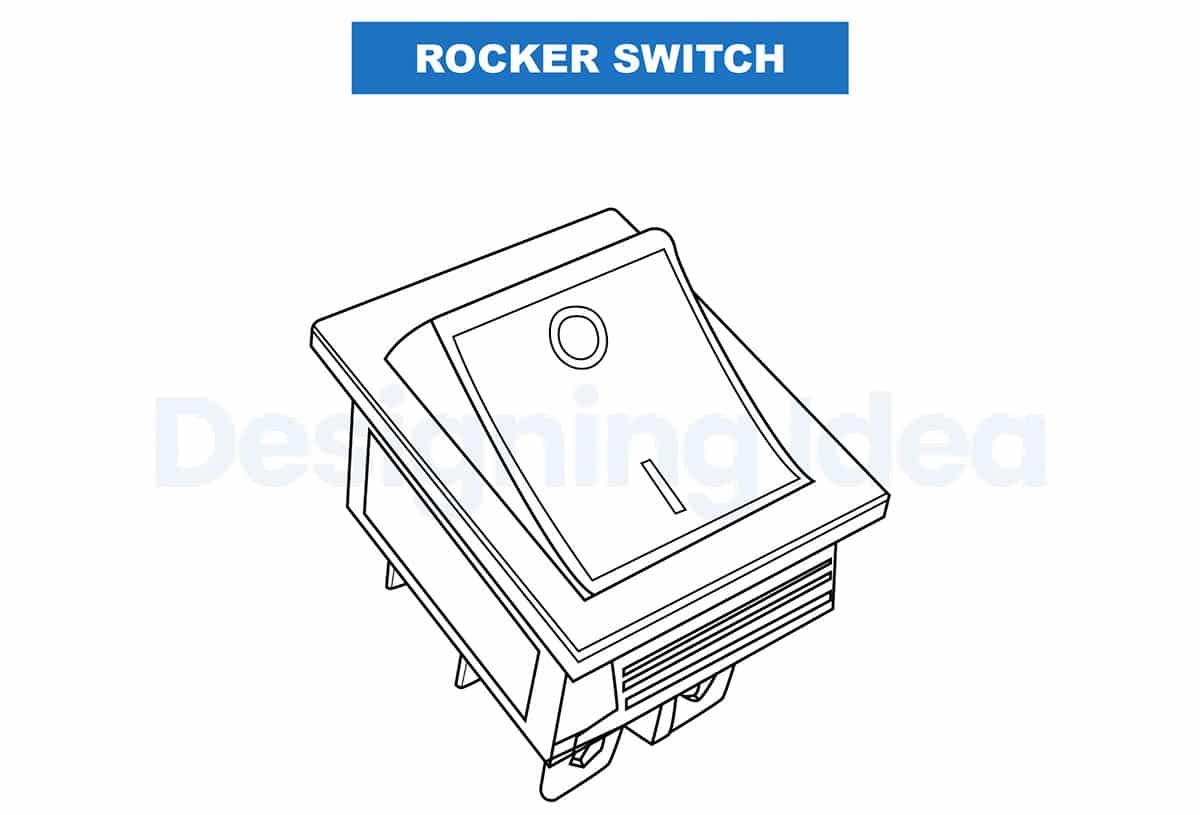
The rocker switches are ideal in warehouses or big multi-purpose rooms where typical industrial lighting is required. They are atypical on/off toggle switches with no light control options, designed for utility above aesthetics.
They include a completely enclosed mecahnism for damage prevention, making them perfect for places with harsh working conditions.
Many rocker switches also feature black designs with red LEDs to make it simpler to locate and turn on in a vast dark room.
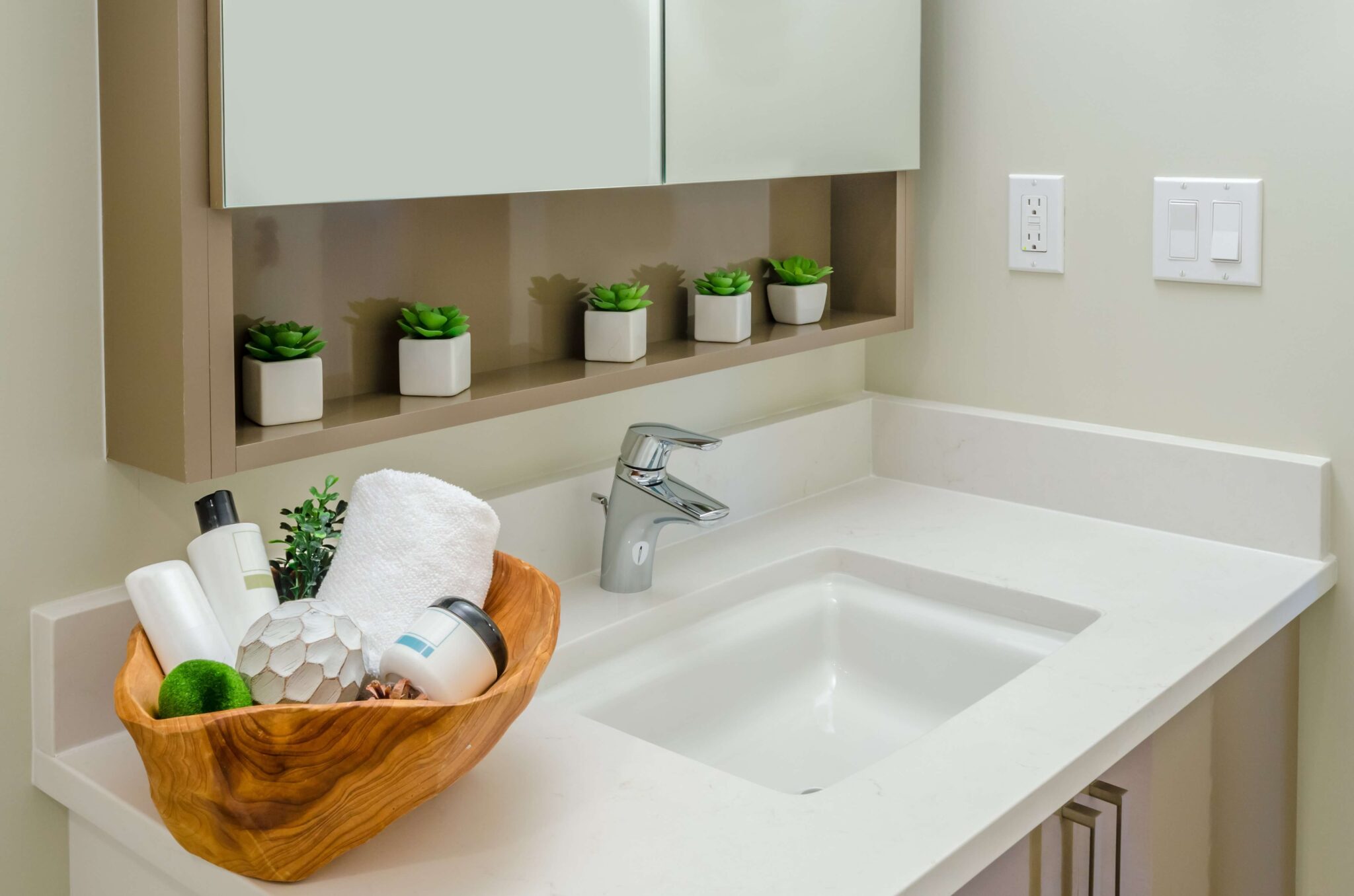
An example of a rocker button in the bathroom.
Single Pole Switch
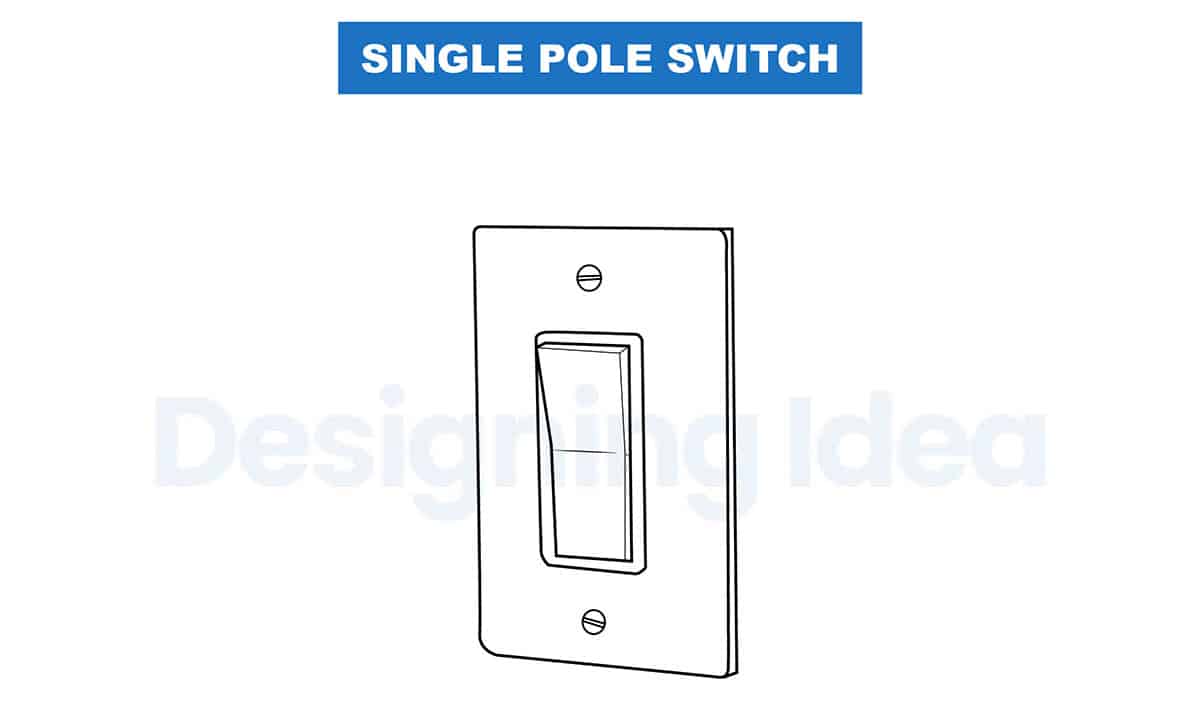
Single-pole switches, the most popular form of a light switch, and are lever-based toggles with a basic on/off operation. The term “single-pole” alludes to the switch only having one circuit, allowing you to operate one light from a single toggle.
You can distinguish single-pole switches by the ON and OFF labels on the lever. A single-pole switch has one input and one output. They can be either latching or momentary and can be generally wired open or normally closed.
“Single-pole, single throw” and “single pole double throw” are the two varieties of single-pole switches. You can utilize the single pole controller in a small closet or bathroom for light control.
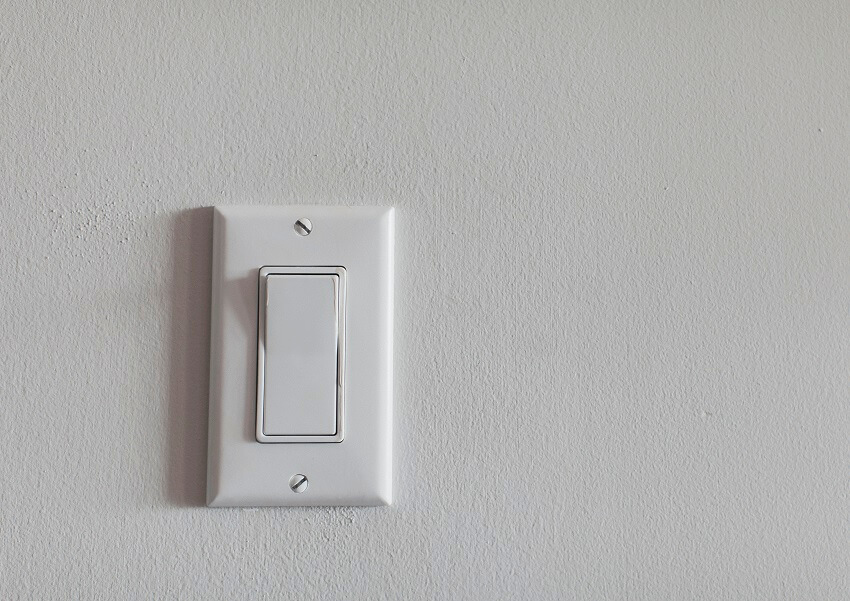
The switch’s mechanism connects or separates two wires, hence the term a single-pole switch. There is also a ground cable that protects against electrical failures.
3 Way Switch

A 3-way light switch contains three screw terminals for wire connections, including ground, and is more extensive than a single-pole design.
Two of them accept traveler wires that connect two switches. The third terminal has two buttons; one links to the hot supply wire and the other to the light.
A three-way switch lets you operate a ceiling light (or other electrical & lighting fixtures) from two different places.
A long corridor or stairwell, for example, may include a set of three-way switches at either end so that lights can be switched on when reaching one end and then turned off when approaching the other.
Double Pole Switch
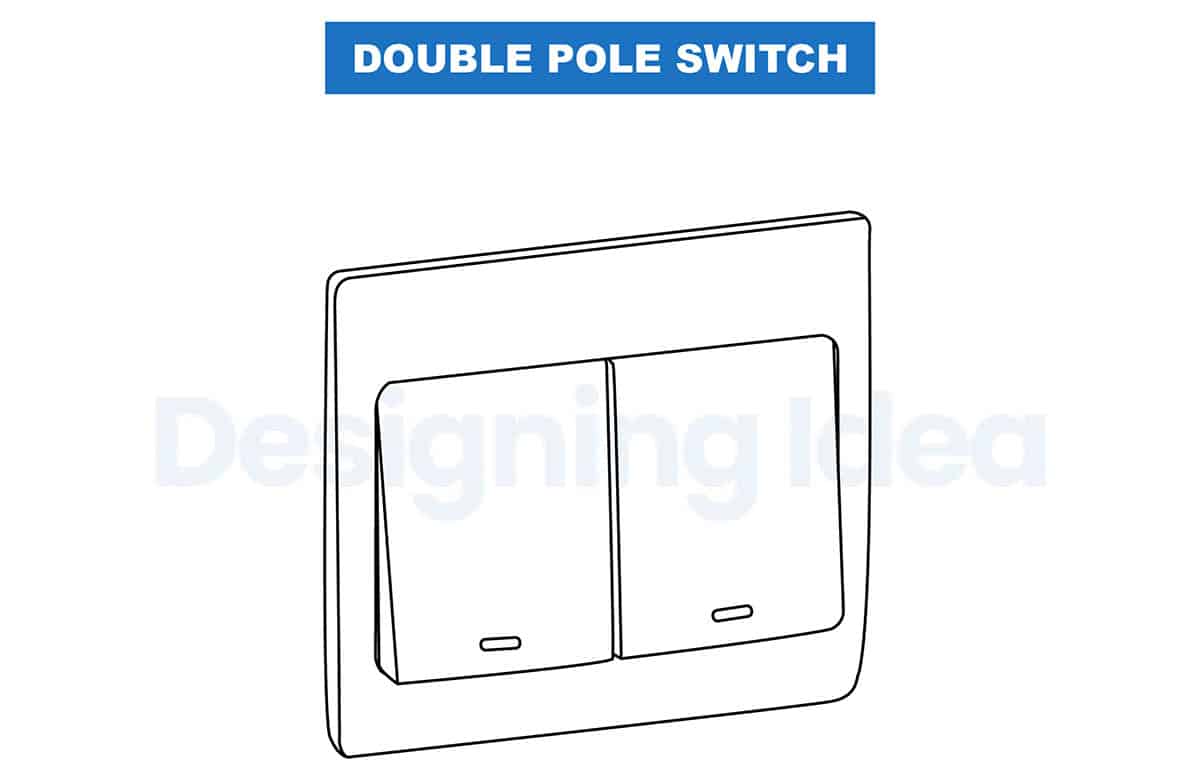
In double pole switches, you can control two connections from one place. They are more frequent in industrial settings than in residential ones. You utilize them for more significant currents or power demands.
They can handle devices that operate at a voltage of up to 240 V. Heating appliances, motors, and machines may all benefit from these switches. Unlike single-pole, they contain four brass terminals instead of two and a ground connection short circuit.
4 Way Switch
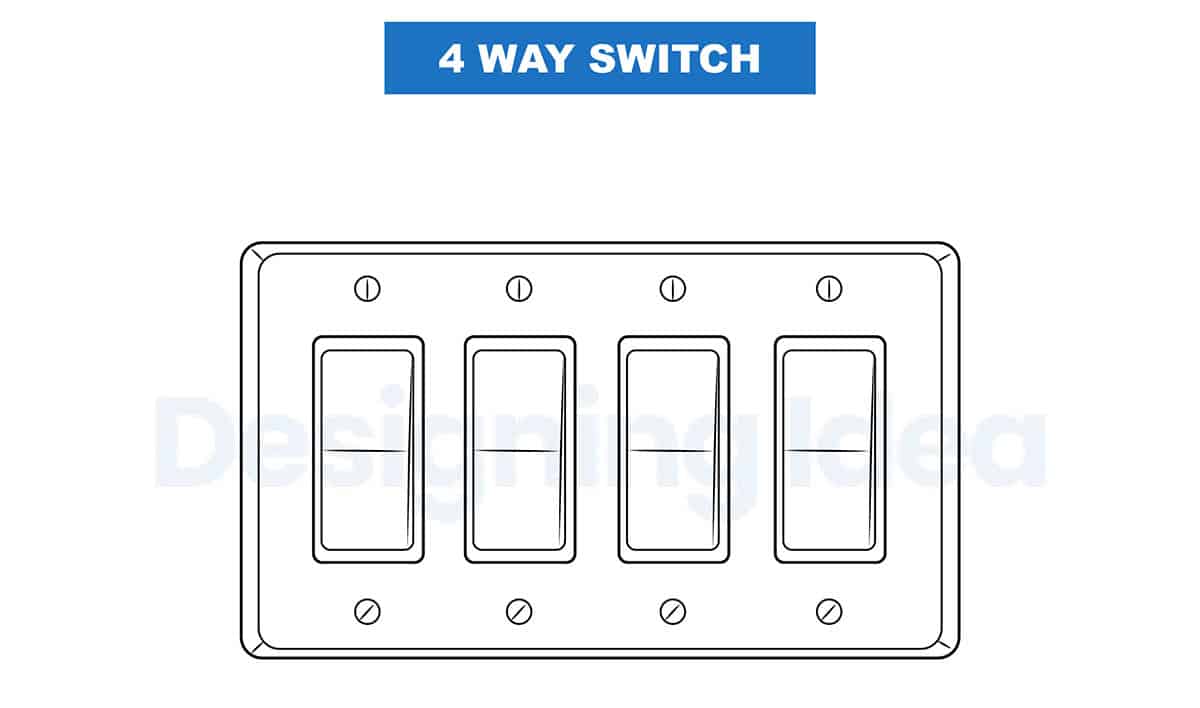
Lighting may be controlled from three or more places using four-way switches. You can use three-way switches and four-way switches together. On a four-way design, four terminals offer two sets of toggle positions.
Current may flow across two terminals while the control is in the up position. When you wish to operate a light or other fixture from more than two places, you utilize 4-way switches.
Pole Receptacle Combo Switch
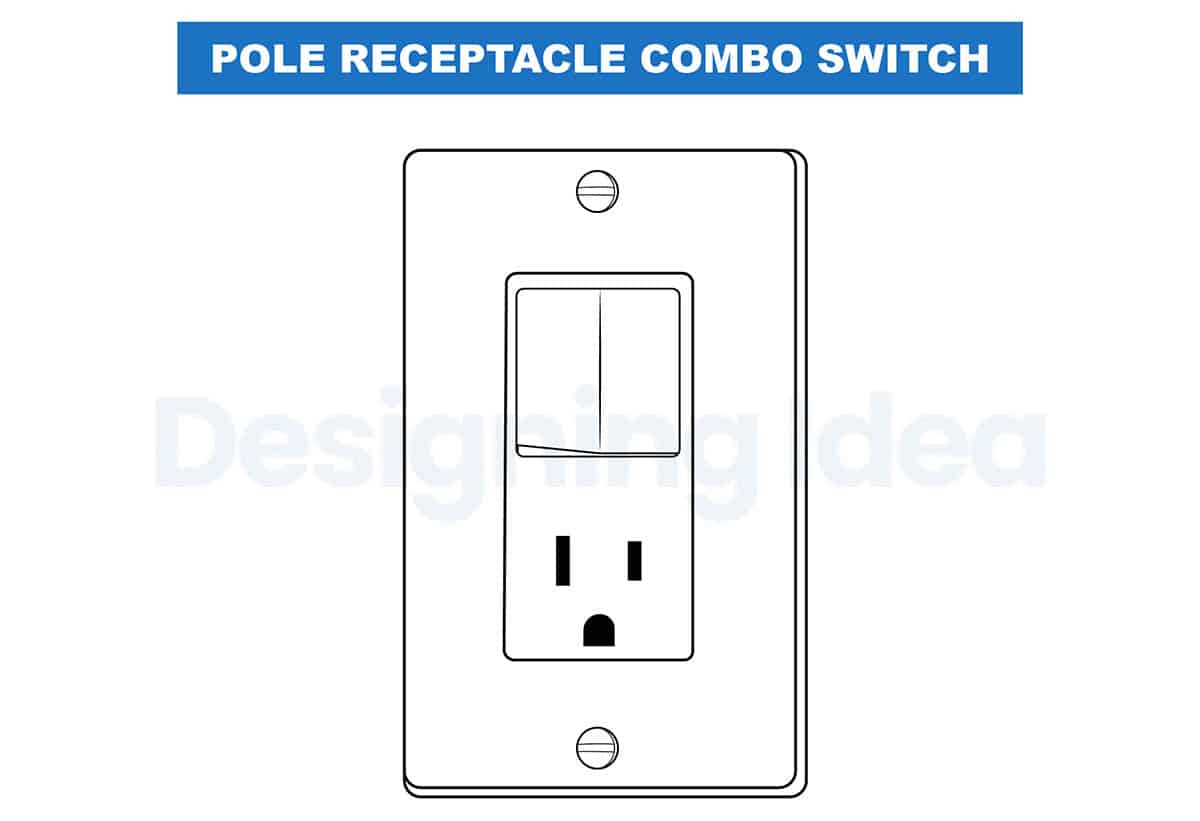
The pole receptacle switch is a primary toggle linked with an electrical outlet for increased functionality, making it the ideal simple switch for convenience and adaptability.
A pole receptacle’s multi-function design is perfect for situations when more outlets are required. You see them often in homes’ kitchens and bathrooms.
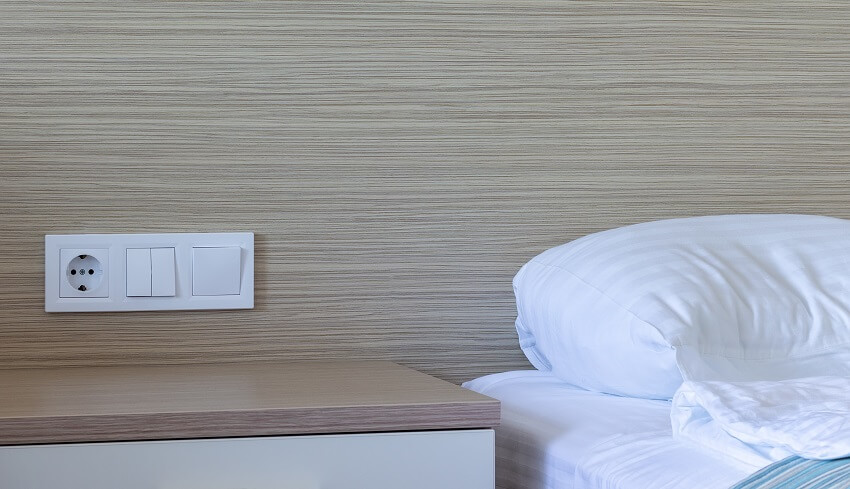
Example with a pole receptacle combination next to the bed.
Smart Switch
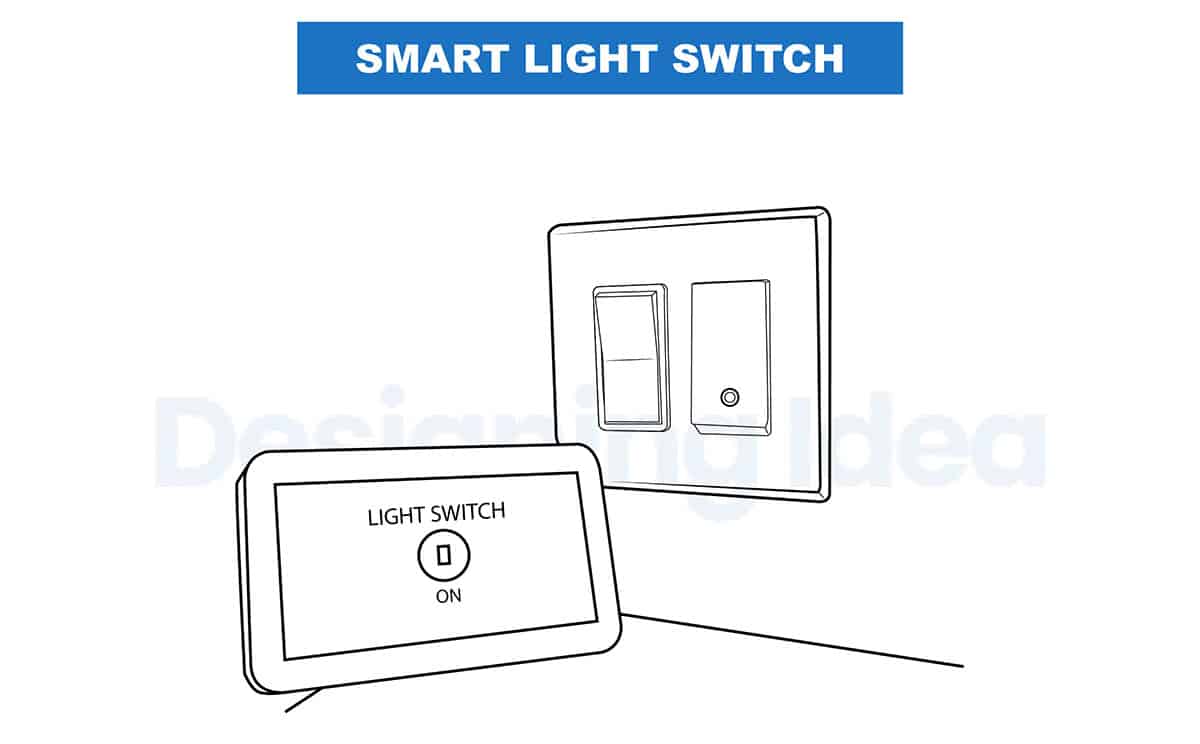
Smart light switches are for smart homes and lighting systems. Smart switches connect to your electronic devices, such as your phone or Alexa. They allow you to turn lights on and off as well as alter the brightness remotely.
They can be set to conveniently turn on and off at a set schedule for extra security when you’re away from home and help save on energy costs.

You may activate this lighting control with a phone app, a remote control, or by speaking to Alexa, Siri, or Google Assistant. You can also use the apps to turn lights on and off on a schedule or use timers.
Wireless Switch

Handheld transmitters can operate wireless light switches. To operate, they rely on radio communication.
With advancements in technology, these lights may now be controlled by Bluetooth and Wi-Fi from your smartphone, eliminating the need for a separate remote. Many of these smart switches also include additional features such as dimming and color choices.
Dimmer Switch
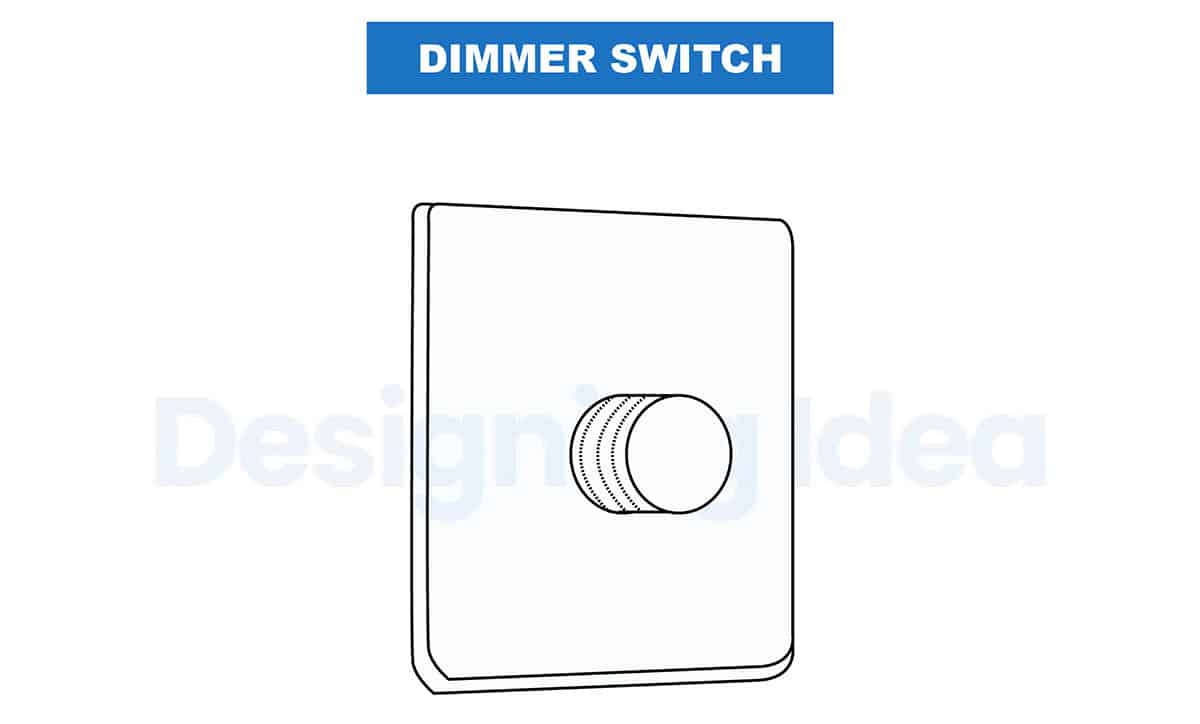
Dimmer switches, which reduce light brightness without turning it off entirely, provide more personalization than a conventional on/off flip switch. A dimmer’s controls might be revolving, sliding, or other variations.
Dimmer switches, whether used on fluorescent or incandescent lights, can create softer moods and save money, too. – Popular Mechanics Complete Home How-to, Albert Jackson and David Day
They come in multi-location models, much like standard light switches, and may dim the same lighting from various house parts.
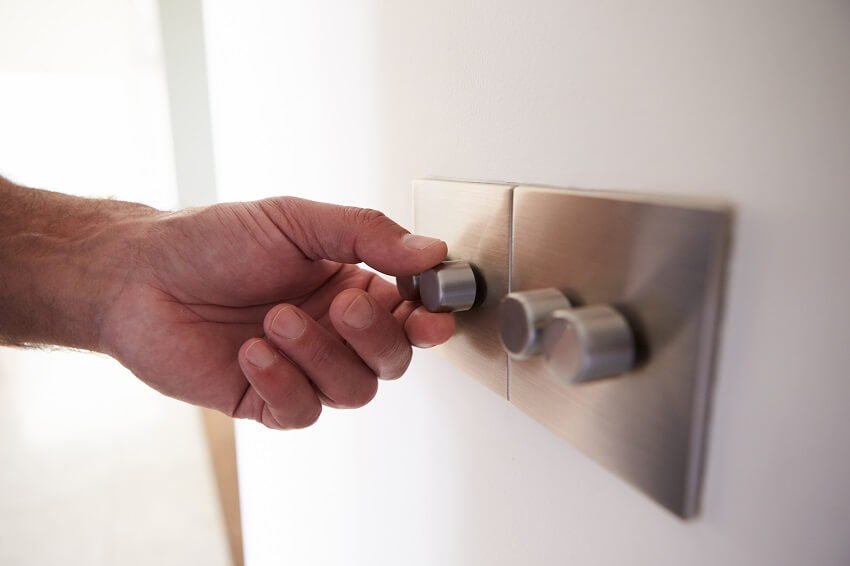
Adjustable overhead lighting is a terrific upgrade that adds charm to any home, and installing a dimmer is just as easy as installing a single-pole switch.
Push Button Switch
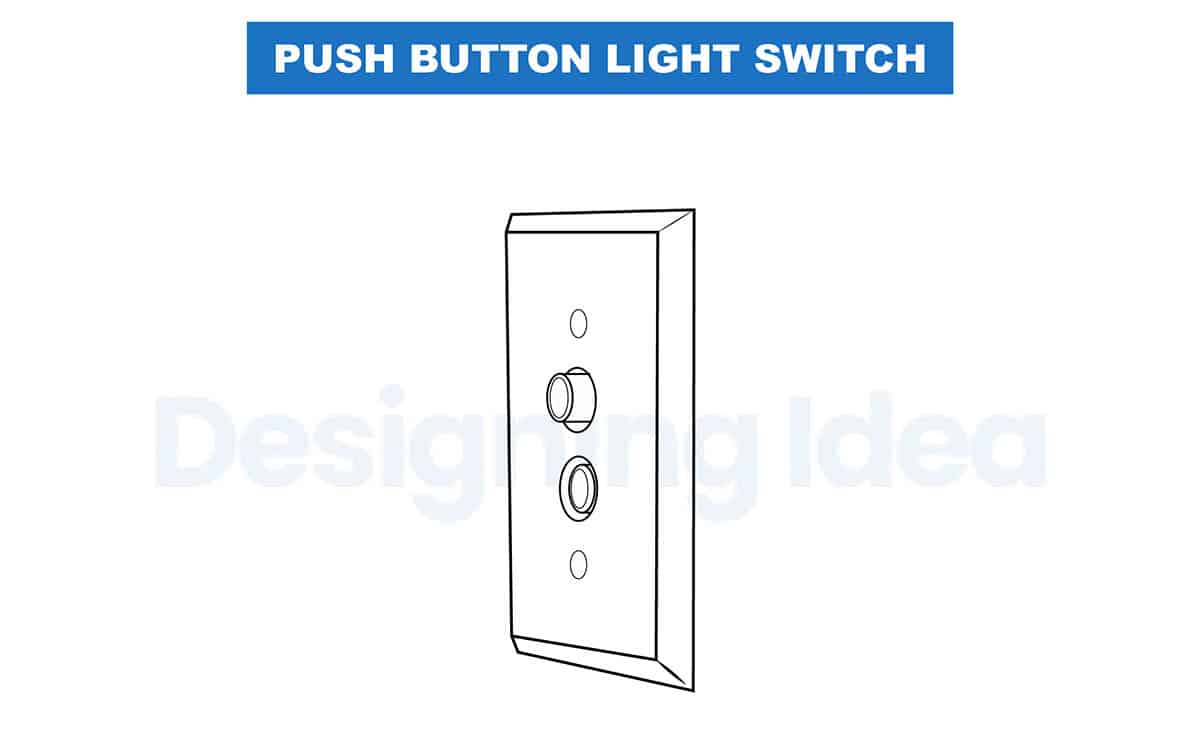
Push-button light switches are arguably the most popular type available. Sometimes, you can connect it to both the lights and an exhaust fan.
There are differences between these push-button switches as well. Some of them are built so that when you push the button, it remains recessed until you press it again.
Some models allow you to push the button, and it will return to its original position. Personal choice will determine which style you prefer.
Some people like recessed switches because they visually indicate the light’s location or mode. It makes things easy; therefore, this is an excellent option to consider.
Selector Switch
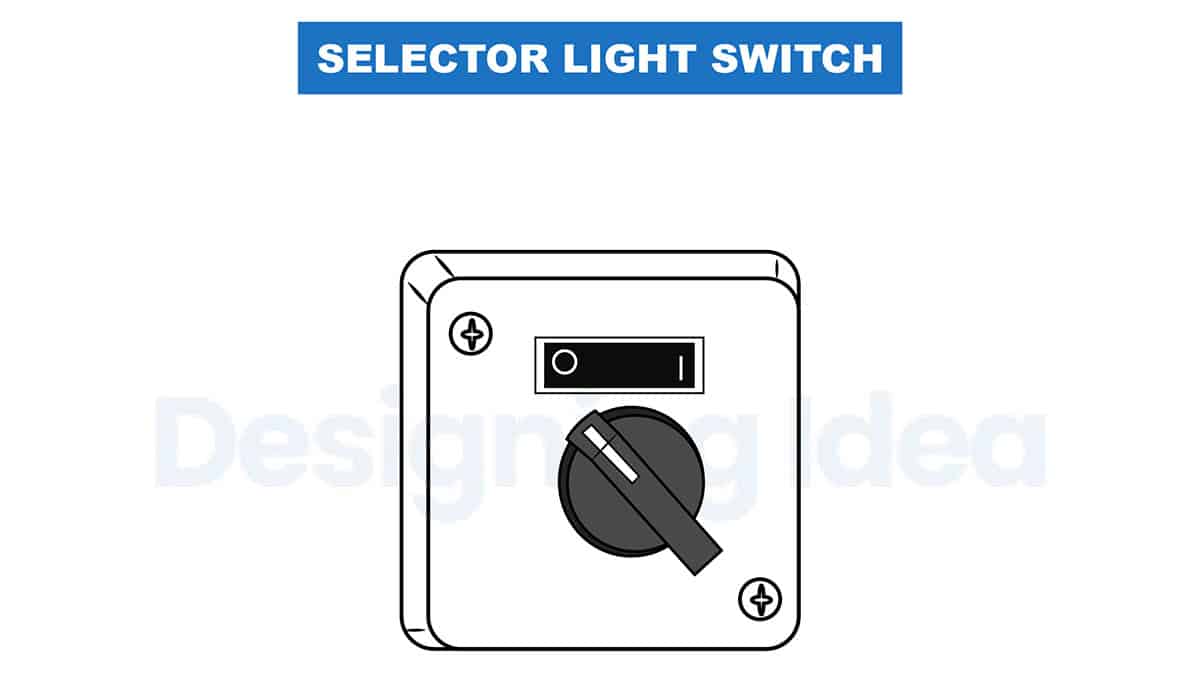
A selector switch might come in handy when setting up lighting with two separate settings. The selection toggle will enable you to swap between two distinct settings quickly.
Fans often employ these sorts of switches. They allow you to change fan speeds as well as fan modes.
When individuals have lighting systems with multiple colored lights, they may employ these sorts of switches. It allows them to choose which one they want to utilize at any given moment. It is a simple way to set up your lights, and you will see these sorts of light switches in a variety of locations.
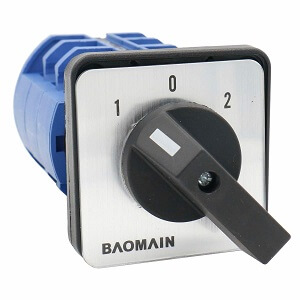
See this selector toggle at Amazon [sponsored link]
Rotary switches are the most common form of a selector controller. It works in the same way as a dial. There are also selection switches, such as buttons to push or those that work similarly to toggles.
Proximity Switch
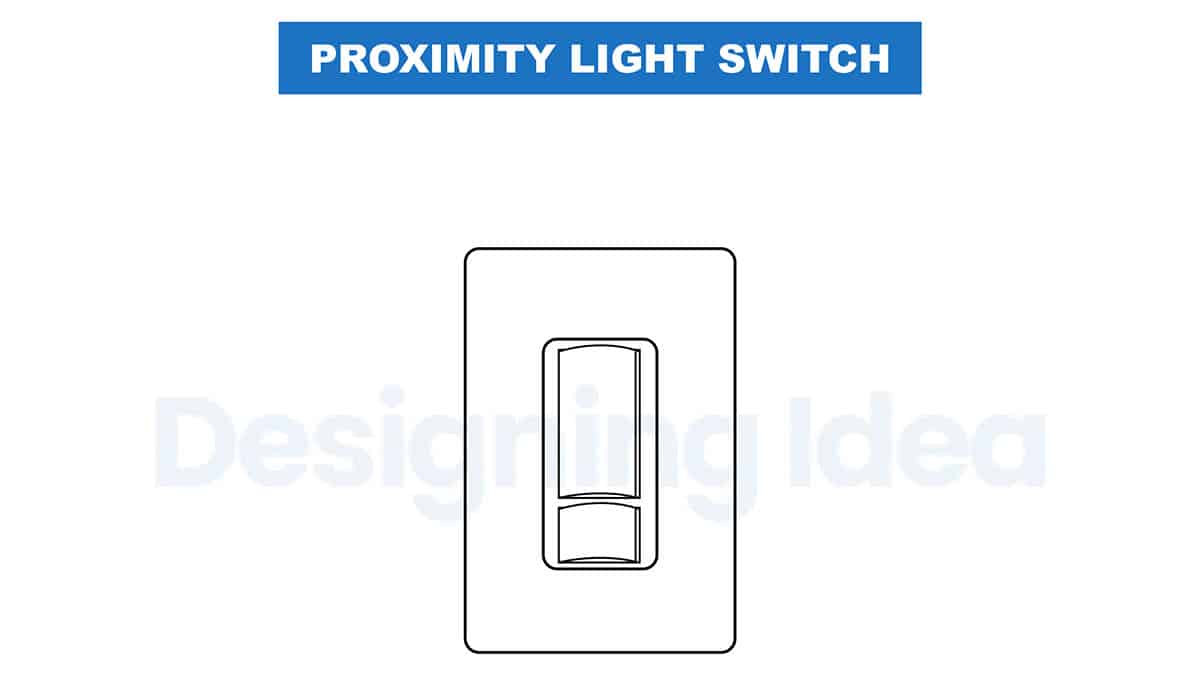
When you want to save energy, proximity light switches are a great option to install in your home. When no more people are in the room, the lighting controller will turn off.
This option makes saving energy simple, and you won’t even have to look for the flip plate when you go into the room. If you utilize this type, you can save money on your monthly energy expenses.
On the other hand, allowing the proximity sensor to come on automatically as you enter the room may be inconvenient. Some individuals like things to be darker, so having the lights turn on full blast every time you go into the room may not be a pleasant concept.
If you like the idea, you should set up a controlelr without too much difficulty. In living rooms, many homeowners choose to utilize these light switches.
Photoelectric Switch
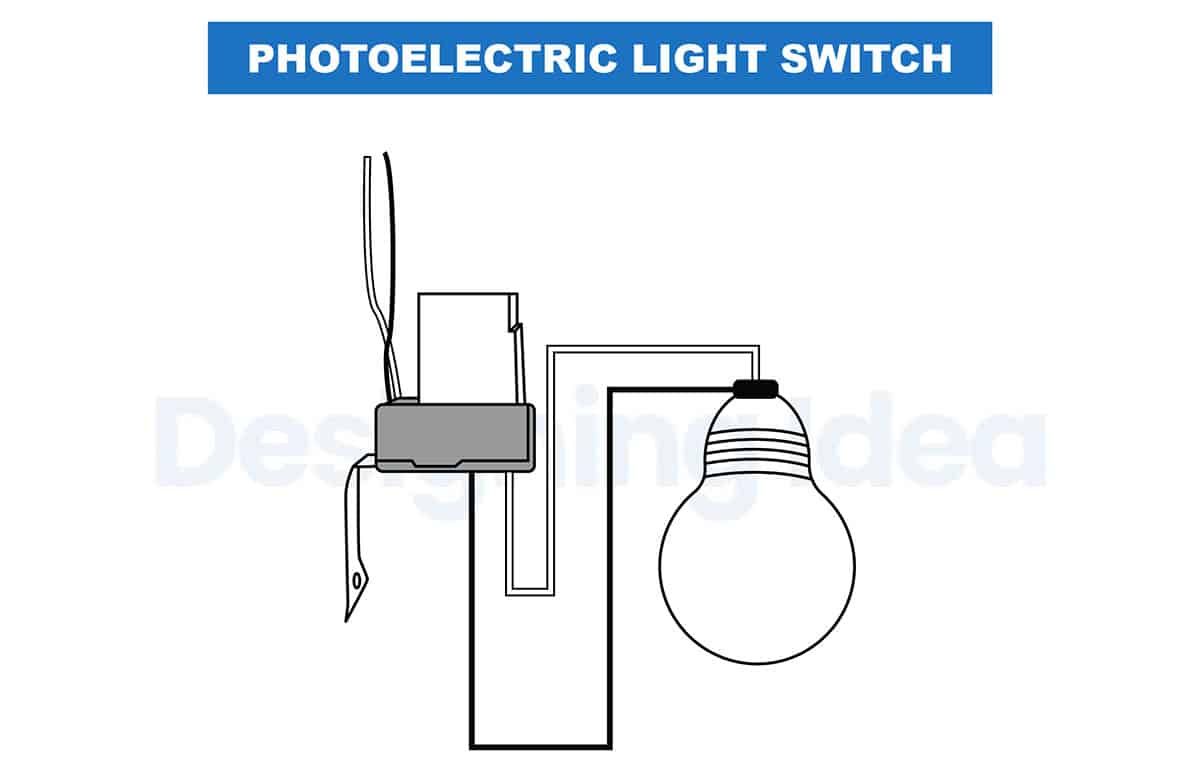
Photoelectric light switches are not as widespread in houses as the other types on this list. Regardless, this style is quite handy for various purposes. A photoelectric light switch is required to set up the light to automatically turn on when it gets dark.
The light will turn on if the sensor detects that light levels are starting to fall. You won’t have to waste time looking for a toggle or stumbling over things. The light will turn on when it is required.
This form of a light controller has some intriguing potential uses, and it is debatable whether or not you need one like this for more than one location. Some people use photoelectric light switches for their porch lights to ensure that people can see what’s happening outside.
Street lights are the most common use for these lighting regulators. They are suitable to use in your garden, on your porch, or anywhere else outdoors where you will need to be able to see at night.
Light Sensor Switch
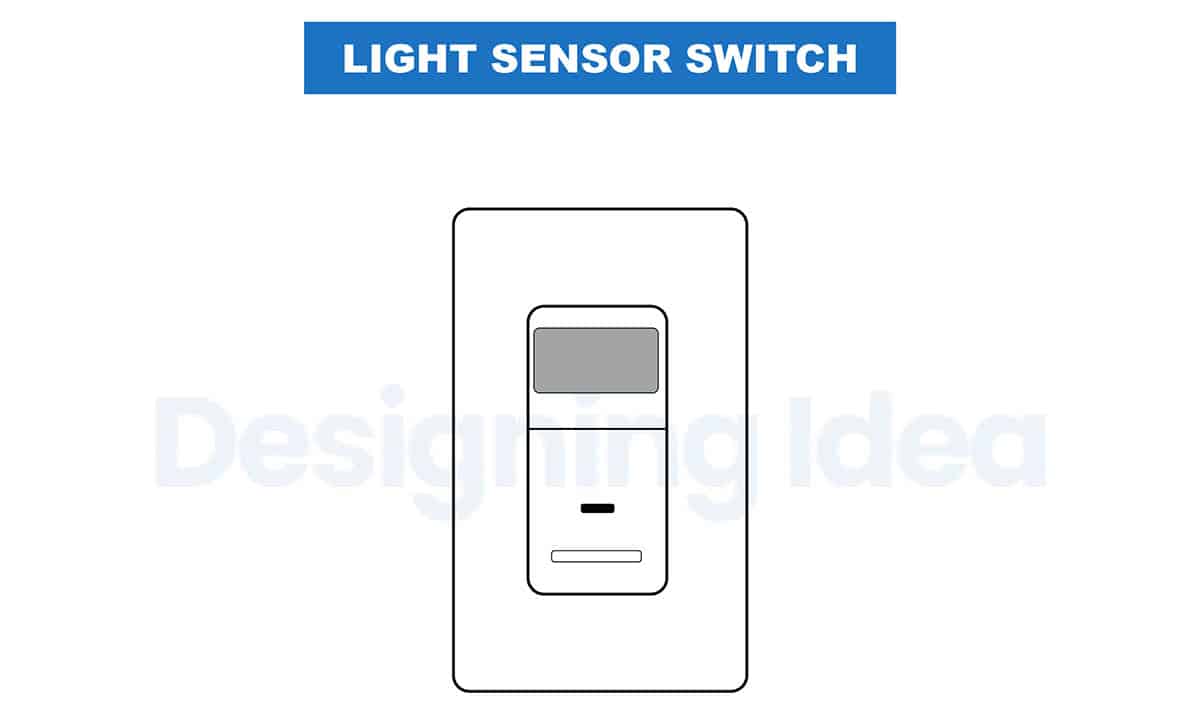
When a person enters the room, motion sensor light switches detect movement or body heat, turning on the light and shutting it off when the person leaves. These controllers are simple to install, with only a few essential tools.
Most DIYers can replace old light switches with a motion sensor device in minutes. The speed of the returning sound waves varies when someone enters or moves within the room, activating the power. They are composed of cadmium sulfide, lead sulfide, and indium antimonide.

See this sensor at Amazon [sponsored link]
Touch Plate Switch
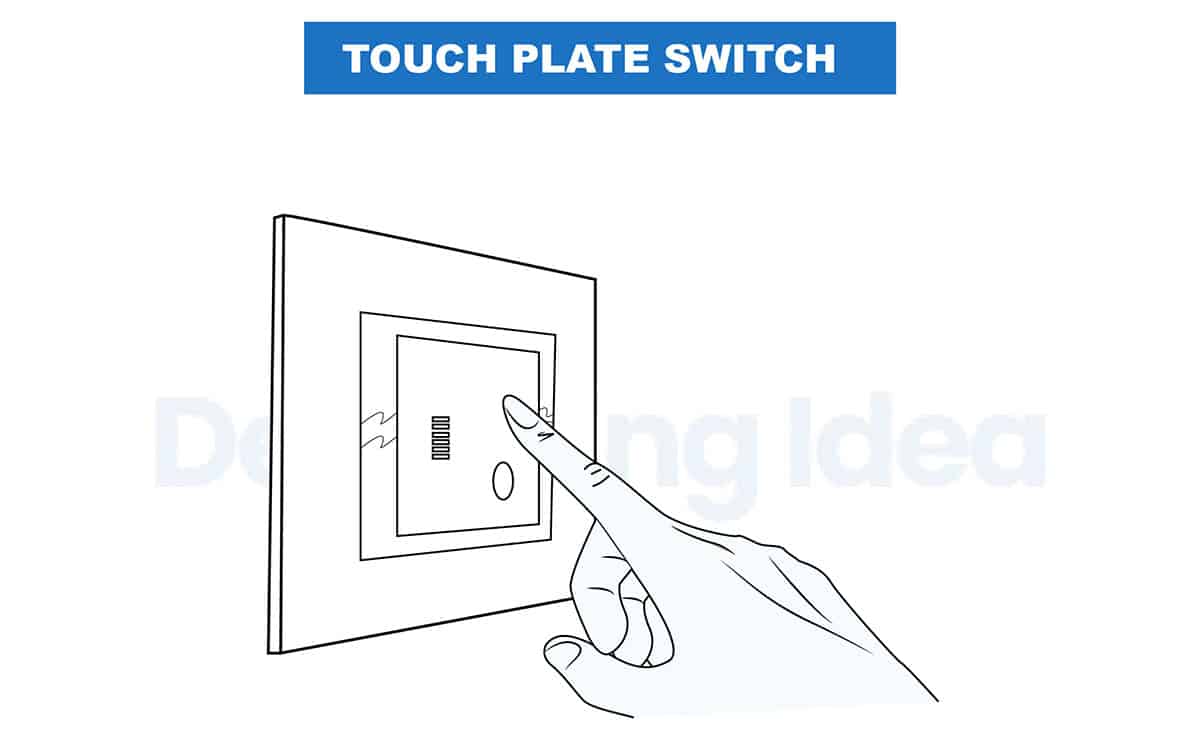
You activate electronic switches by touching the plate, known as the touch plate. They have no moving parts, unlike toggle or rocker designs.
Since no snapping pieces are involved in operating the lights, these are also known as silent switches.
To turn them on, touch them once, then again to turn them off. You cannot wire the touch plate between the power source and the lights since the switches are momentary contact, and you will only connect the wires for a short time.
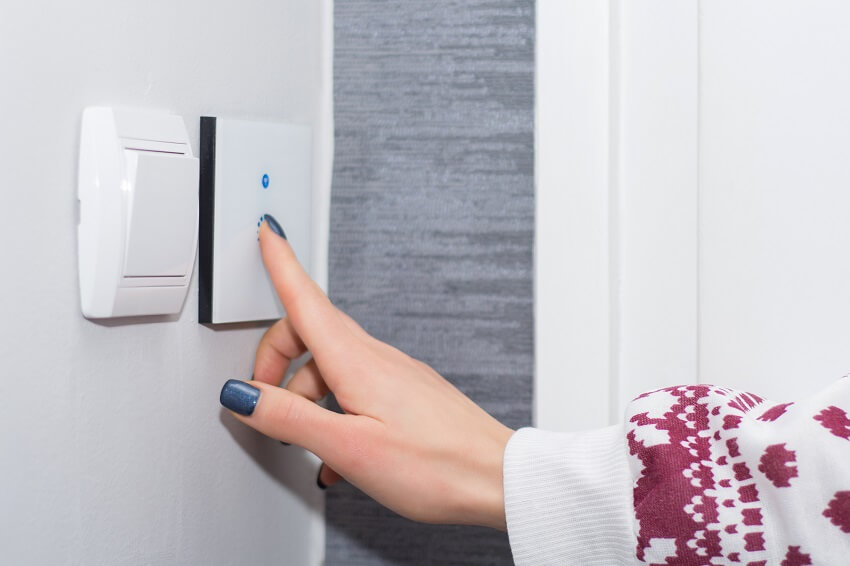
Picture of a touch plate installed on the wall.
Motion Sensor Switch
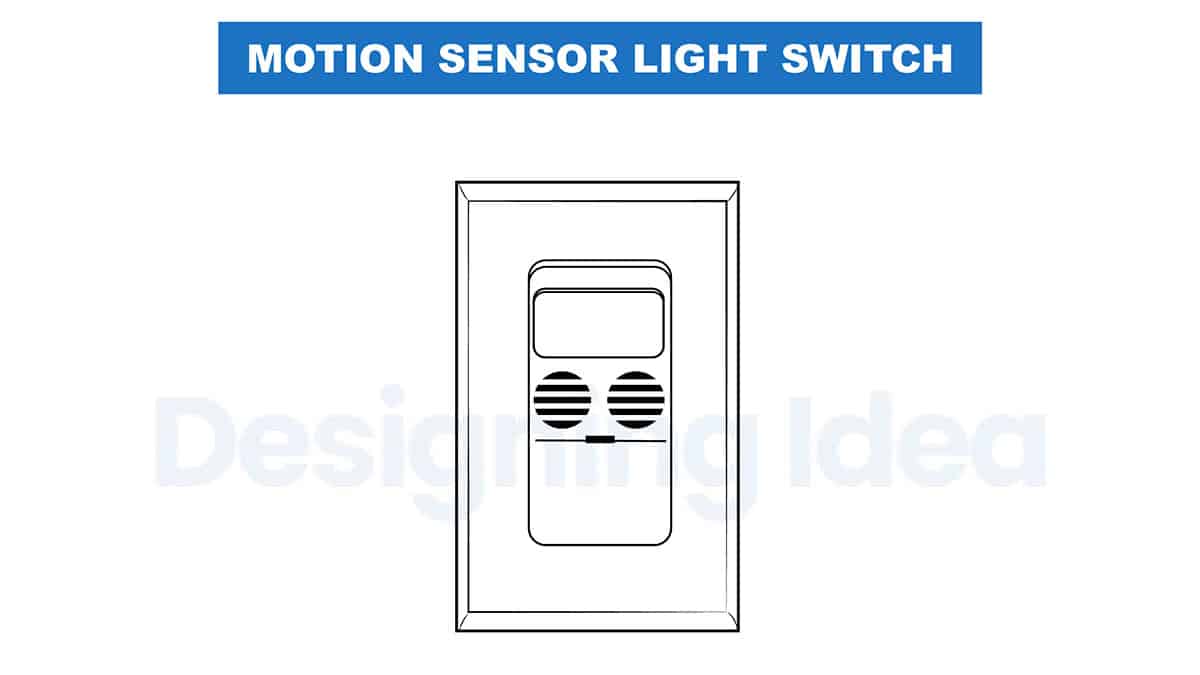
You have likely come across motion-activated light switches before. If you’ve ever gone up to someone’s house and watched the porch light turn on automatically, you have seen a motion-triggered light. These options are helpful for various functions, but they are mainly useful for security.
They may be pretty powerful instruments for deterring thieves. Its sensor will prevent anyone from sneaking into your home late at night. Any would-be intruders are generally scared away by the unexpected activation of the light.
The motion sensor unit is a stand-alone mechanism that does not include any lights. The changeover should be easy to set up and should take a few minutes.
To install this type, you must place it correctly and connect the lights as directed. Getting motion-activated lights that come with the control unit may be more convenient. It is an excellent safety precaution to take, and it will help you sleep better at night.
Sound Activated Switch

Sound activation is one of the most convenient methods to switch a light on and off. A clap or a snap of your fingers may all be required to change the light. You may recall seeing an ad for the “clapper” that can be turned on by merely clapping your hands.
Technology has improved over time to make it even more dependable. This basic light controller connects to a standard electrical socket.
You may use the outlet to plug in a lamp or another light. The light will turn on when you clap your hands.
Illuminated Switch
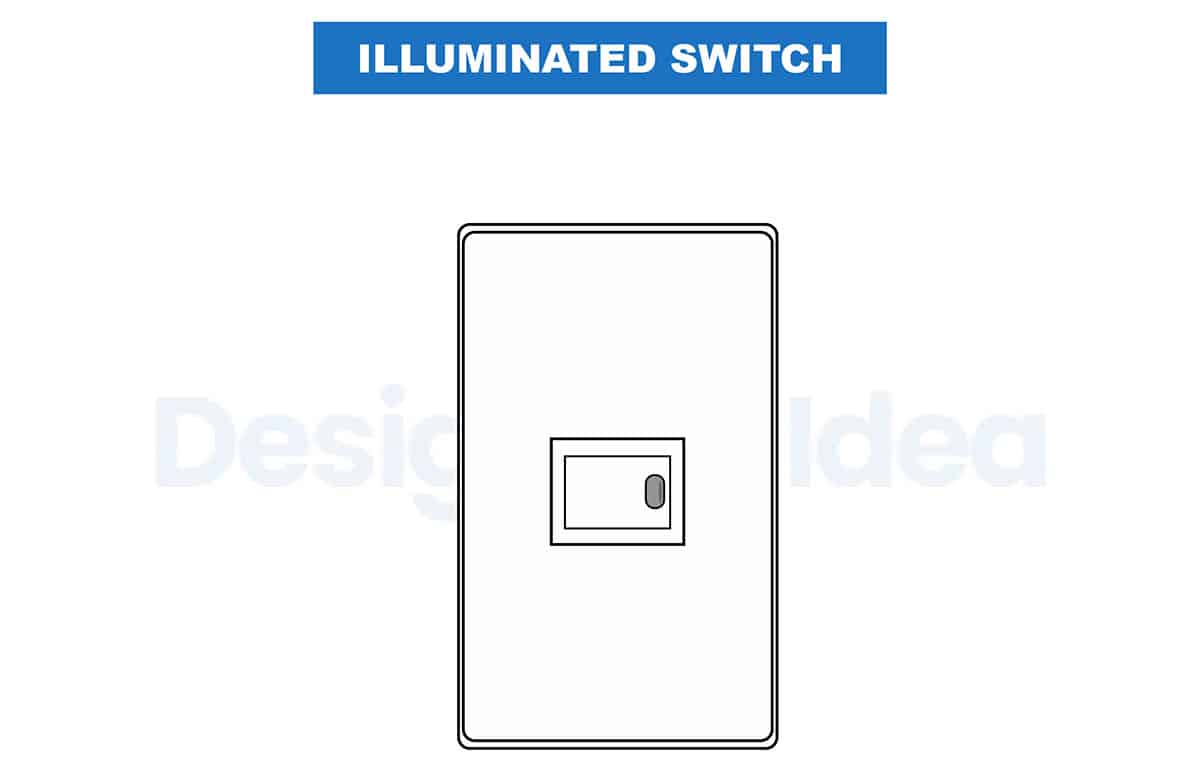
Illuminated switches were first introduced in the 1950s and quickly became popular in homes. The primary use of these controllers is to allow people to locate switchboards in the dark. You can install the switch’s surface with a tiny neon bulb or LED lights.
These are often installed in bathrooms and kitchens because they produce just enough light to serve as a night light. This allows you to securely find your way around without switching on a light all the way.

Image showing two different types of illuminated rocker plates.
Australian Rocker Switch
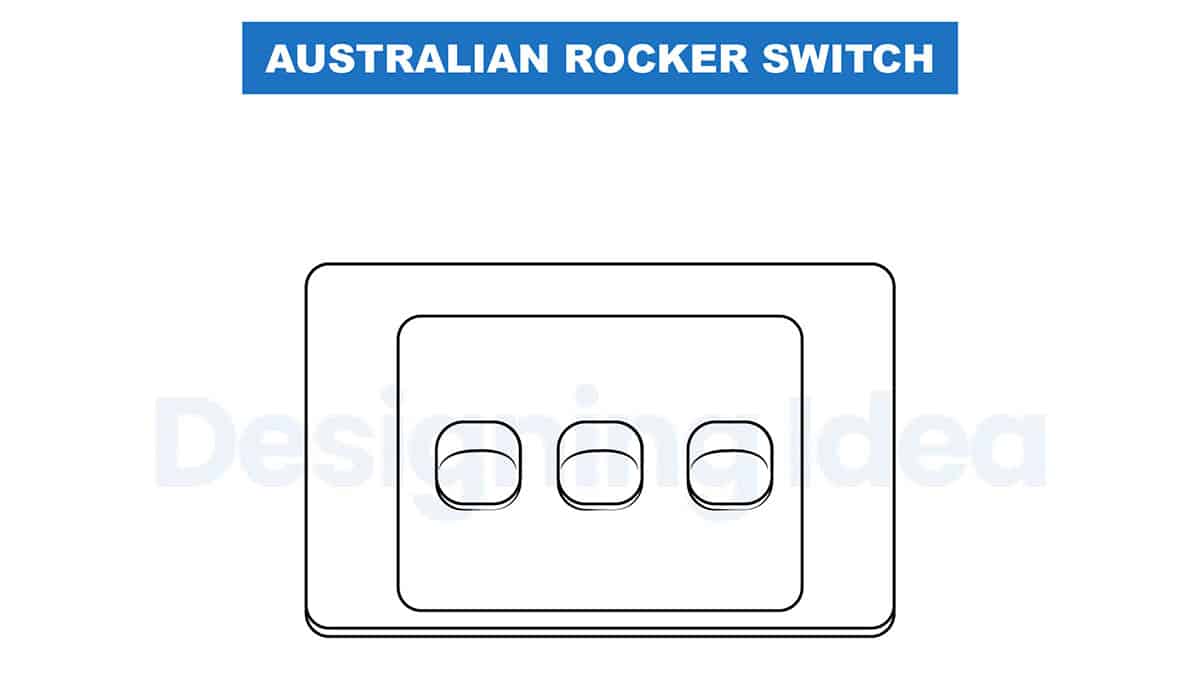
Australian rocker switches are a smaller version of the basic rocker design. The term comes from the ordinary home switches in Australia and New Zealand.
These controls are tiny and may be fitted even in locations as small as a door frame. Almost six switching mechanisms equip the same area as one or two conventional-sized rockers or toggle mechanisms.
Vandal Proof Switch
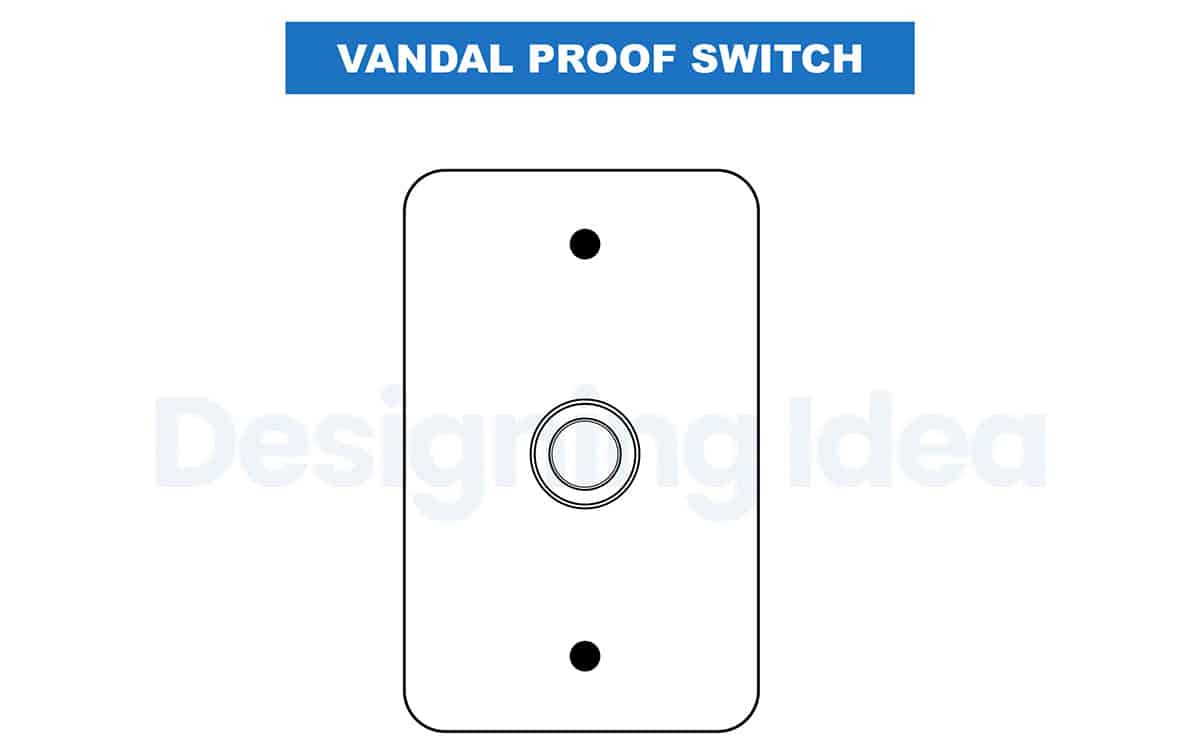
Vandal-proof switches are often seen outside in public infrastructures such as pedestrian crossing signals and vending machines. Vandal-proof options can withstand a lot of usage and even abuse.
They are also dirt and moisture-resistant. Thin stainless steel or heavy-duty plastic casings cover vandal-resistant controllers. On the inside, they are not different light switches. It is the exterior that distinguishes them.
Pull Cord Switch
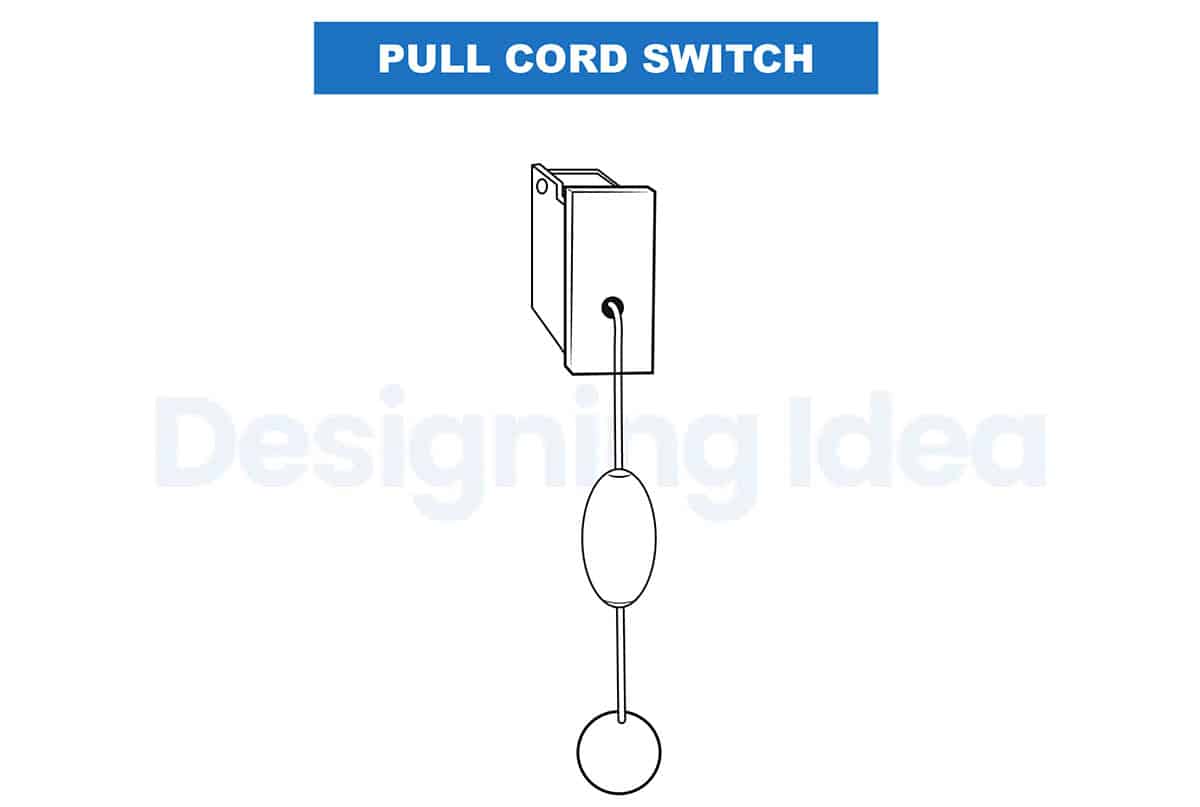
Pulling a chain or rope activates a pull chain switch. You will often see pull cords on ceiling fans and fan alternatives, commonly employed to control ceiling lights placed in basements or garages.
Pull cords are safe to use in damp locations like a musty cellar if the cable is insulating. Typically, you will utilize a beaded metal cord or a linen rope.
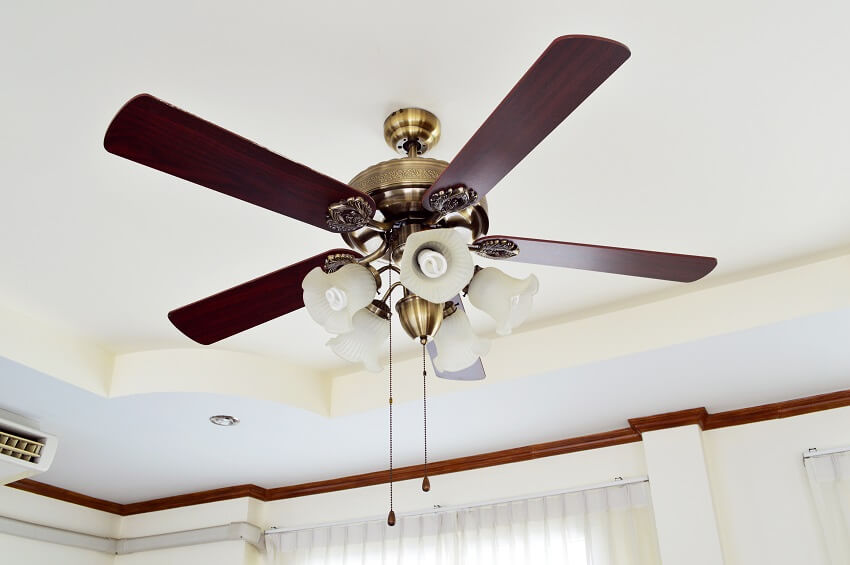
Picture of a pull cord on a ceiling fan light.
Multiway Switches
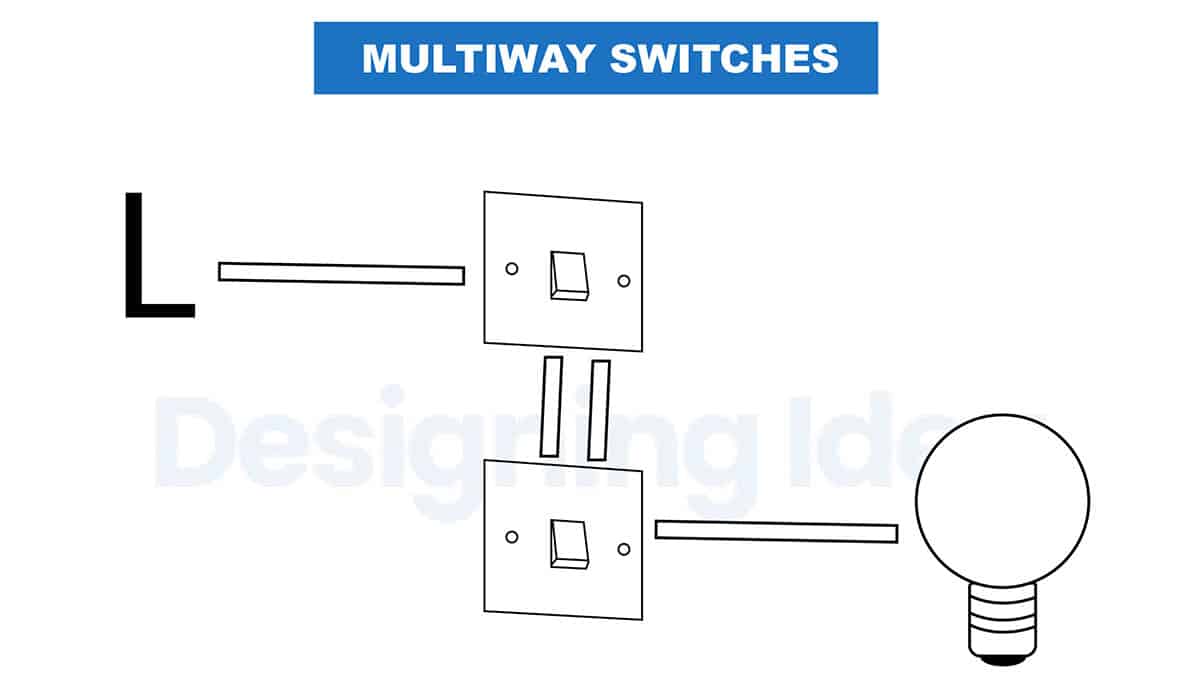
Circuits may be controlled from many places using multiway switches. You can use multiway controllers to regulate lights in lengthy corridors or stairwells.
Multiway switches are pretty useful overall. You can have one at the foot of your basement stairwell to control all of the lights in your drop ceiling alternatives, and it will save you a lot of time.
Wi-Fi Switch
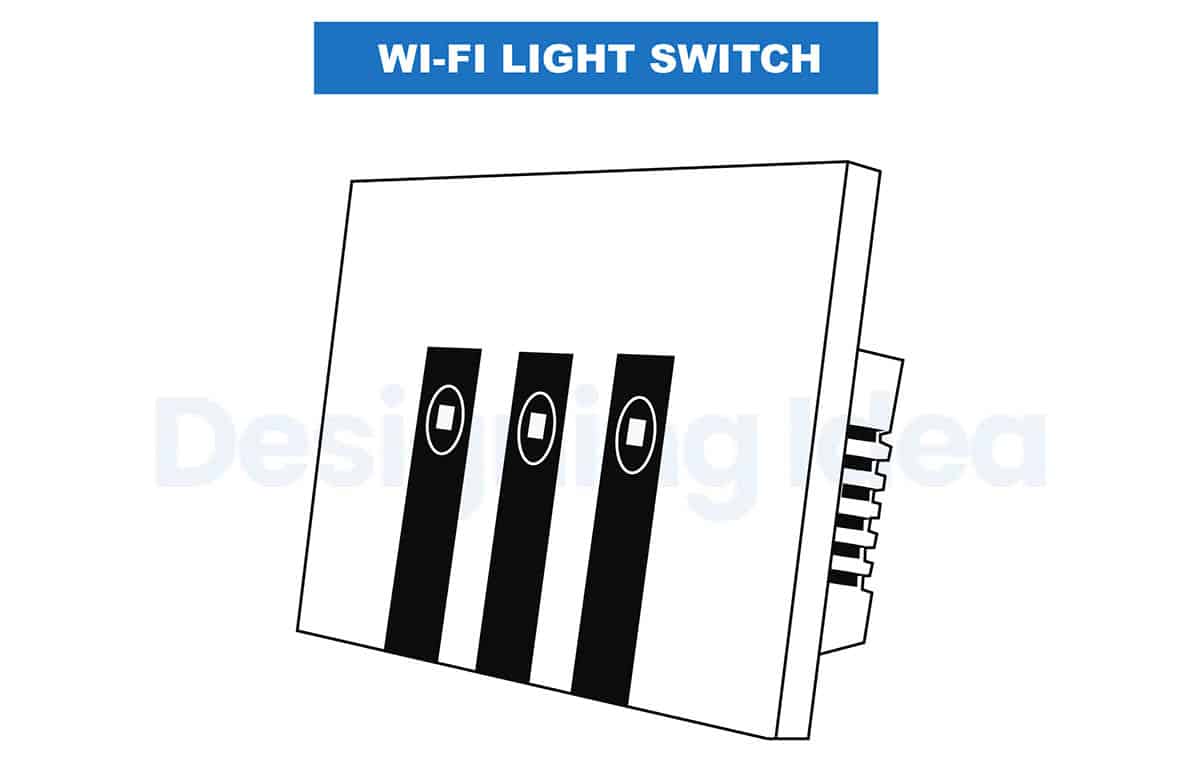
The light switch, like other household essentials, is getting a technological upgrade. Using a smartphone app, you can turn a light on or off practically anywhere using Wi-Fi lighting control.
A wireless controller may also help you save money on your power bill, particularly useful while away from home.
Z Wave Switch
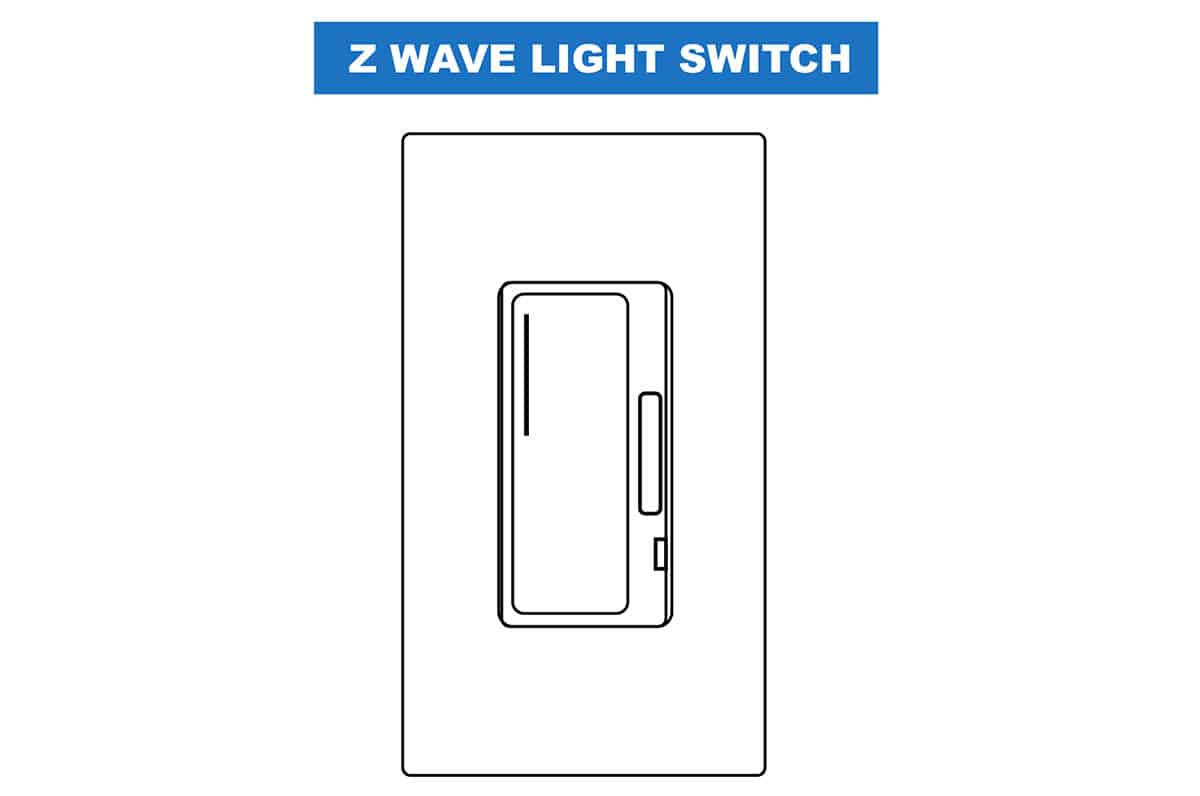
Smart lighting with Z-Wave enables you to switch on, turn off, dim, brighten, or change the colors of your lights from the comfort of your sofa while using your smartphone or while you are not at home. You may also program your smart lights to come on at certain times, such as when you return home.
Smart lights give you complete control over your smart home’s energy consumption. You won’t have to worry about forgetting to turn off the lights anymore!
You can manage your house lights using Z-wave switches through your smartphone, Alexa, or a Z-wave controller interface. Your lighting setup possibilities are almost limitless.
Remote Control Switch

Light switches with remote control are an excellent way to add innovative home features to your house.
You can turn your lights on and off remotely with your phone if you have a remote control installed, or you can manage the smart light with your voice if you link your remote control to a voice assistant like Alexa.

Equipping with smart remote control light switches is the nicest smart home modification you can do. It is a pure delight to lie in bed at the end of a hard day and tell Alexa to “turn out the lights” without having to get out of bed.
Programmable Switch
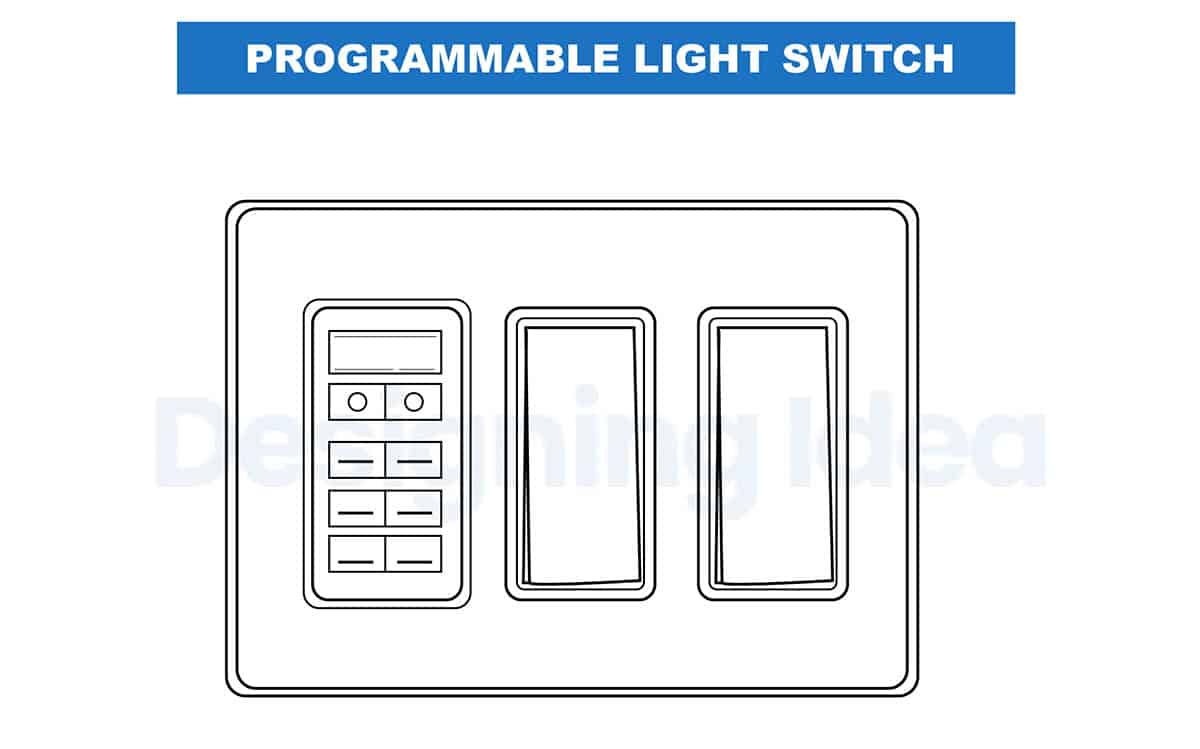
Programmable light switches enable you to control fixtures on and off. You may program the fixture to turn on at different times for each day of the week, allowing you to save electricity.
Wi-Fi capabilities are available on specific versions of this option, allowing you to modify your lighting from the comfort of your smartphone.
Switch With Night Light
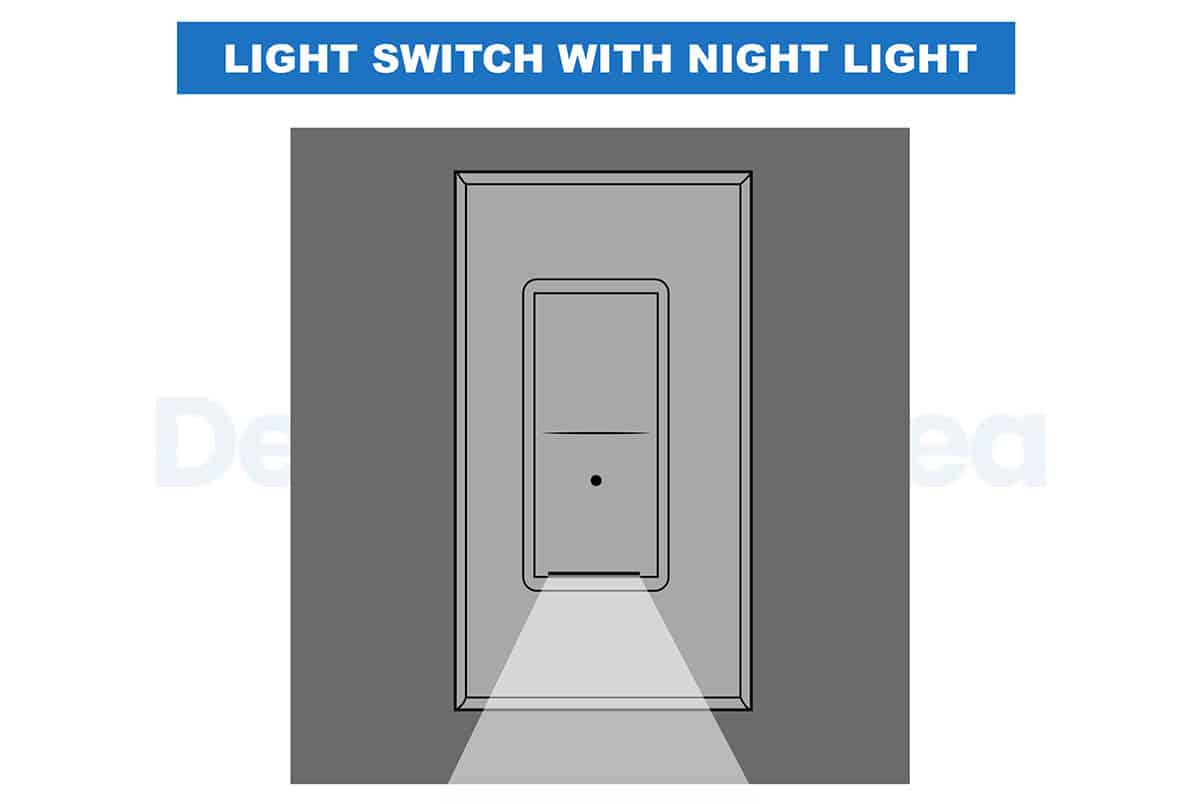
For comfort or convenience, a nightlight is a small light fixture, generally electrical, in dark regions or locations, such as at night or during an emergency. Some nightlights include a photocell that allows them to turn off when the ambient light is bright enough.
Other models have a built-in passive infrared sensor that detects motion and turns on only when someone walks by in the dark.
Many different variations have emerged with the emergence of low-cost LEDs, exhibiting multiple colors, sometimes changing automatically or in a user-controllable manner.
What Kind Of Switch Do I Need?
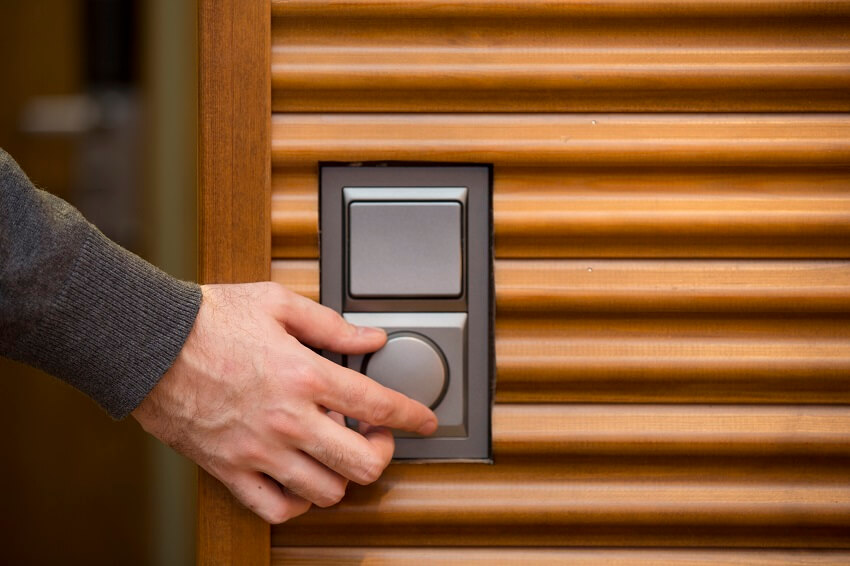
You may find yourself in a situation where you need to determine which switches to utilize in each room when renovating your house. If you are new to lighting, you may be surprised to learn that many products are available, many of which are appropriate for each purpose.
There are two primary considerations to make: function and aesthetics.
Is it better to use a double-pole or a single-pole switch? As previously stated, single-pole options can only control one circuit, whereas double-pole mechanisms can control two circuits.
Double pole switches are excellent for appliances, so if you need a simple light switch, go with a single pole, which is usually less expensive than a double pole.
Is it better with one-way, two-way, or intermediate routes? You can use a 1-way switch when controlling only one light. A 2-way switch is required when two switches control the same light.
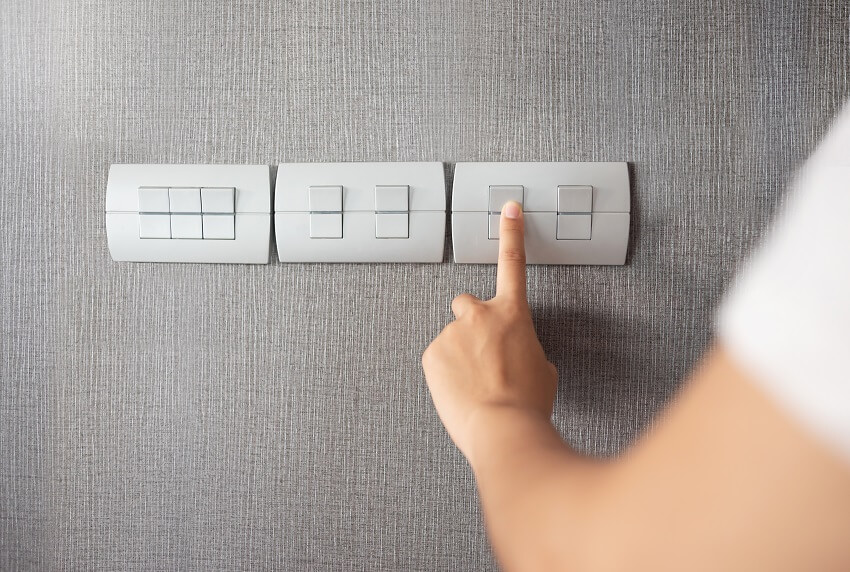
If you have three light switches, one on the ground level at the bottom of the stairs, one on a landing halfway up the stairs, and one at the top of the stairs, the middle one (halfway up the stairs) must be an intermediate switch.
Are you considering sockets and switches mounted on flat or raised plates? Light switches and sockets designed with flat plates feature a slimmer profile, offering less depth compared to those mounted on raised plates.
These have a more sleek appearance than elevated plate sockets and switches, although they are not always practicable to install (the wall needs to be completely flat). Flat plates are also more expensive. Whichever way, these controllers often endure for decades after installation, making them a long-term investment.
Now that you understand the extent of a basic light switch, choose the varieties of lighting controls that best fit your house and your purpose. Alternatively, indulge in something enjoyable and, of course, practical.
For more related content, visit our guide on how to light a living room with no overhead lighting here.


